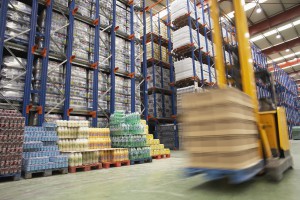Industry Update: The Food and Beverage Industry
These days, food and beverage is focused on fresh—and that’s not just in kitchens and restaurants. From farm to fork, the industry is under tremendous pressures that require new approaches.
For a snapshot of the pressures on food and beverage, look to the category of non-alcoholic beverages, once dominated by a handful of carbonated beverage producers. These days, there are energy and sports drinks, water, pseudo-healthy, fruit juices and more.
And that doesn’t even take into consideration the plethora of packaging. Coca-Cola, for instance, brought back its popular polar bears in winter packaging and, last summer, kicked off its “Summer of Sharing” campaign by swapping out three of its iconic logos with 250 of the most popular first names among American teens and Millennials and asking them to “Share a Coke.” That idea was to encourage consumers to buy a Coke with their own name on it or buy one for a friend with his or her name on it and was hailed as one of the most successful campaigns of the summer.
“Manufacturers have spent a fortune on focus groups and found that the way things are packaged has a lot to do with sales,” said Barry Evans, vice president of sales for MHI member WRH Marketing Americas. “The variety of packaging for the same product is becoming bigger and bigger. Colors change with the season. But along with each one of these changes comes a different SKU.”
An increasing number of products are just the tip of the iceberg when it comes to trends affecting the broader food and beverage industry. Add in more demands—from both consumers and the federal government—for insight into what’s inside those pretty packages. And then toss in a sprinkling of global trends—particularly toward urbanization—to create a recipe that spells lots of new ideas.
An all-you-want buffet
While the manufacturers may have discovered that a variety of packaging drives additional sales, it also has created some complexity at the warehousing level.
First, there is the issue of order rotation, especially with seasonally themed products or packaging. “You don’t want to build up your inventory,” said Greg Chaffee, vice president, food and beverage industry sales for MHI member System Logistics, which offers storage and picking solutions tailored for food, beverage and cold storage. “You have to turn it over quickly.”
It’s driving changes in automated storage and retrieval systems. System Logistics’ Fast Rotating Storage system has gotten away from the crane method to a high-speed shuttle car. “It uses the satellite off the shuttle car to go into the rack and get the pallet and bring it to the shuttle,” Chaffee said. “We have a much higher throughput and can turn over and rotate the storage must faster.”
Once off the shelf, though, that stock may find itself mingling with other products in a way that was unheard of until recently.
“I can remember when a full pallet going out to a customer would have layers of product on it and each layer contained one product, maybe two,” Chaffee said. “Overall, now there often are many SKUs on that pallet. One layer could have eight different SKUs.”
That requires a restructuring of the traditional ways of managing warehouses, Evans said. “You have to be able to deliver products from different lines to that same palletizer. What that requires is some kind of system between the end-of-line packaging and the palletizer so that you can defer or buffer the load and give the opportunity for any load entering the system to be delivered to multiple infeed lines and multiple exits.”
Click here to read the full article.





